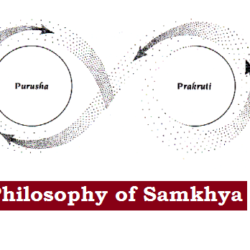
The Protection of Women from Domestic Violence Act (PWDVA), instituted in 2005, is a landmark legislation aimed at protecting women from violence in domestic relationships. It enshrines principles of the Convention on the Elimination of All forms of Discrimination Against Women (CEDAW), which India ratified in 1993.
‘Domestic relationship’ is not confined to the relationship in the nature of marriage, but it includes other relationship as well such as sisters, mother, etc. The term ‘domestic violence’ has been used for the first time in widest sense which covers all forms of physical , sexual, verbal, emotional and economic abuse that can harm the well-being of the aggrieved woman.
Salient Features of the Act
Complaint:
- Apart from the victim herself, neighbors, social workers, relatives can also lodge the complaint regarding domestic violence.
- The offence is considered cognizable and non-bailable.
- It is applicable for divorced women too as a divorcee husband could resort to violence by entering the workplace of his former wife. (as per Supreme Court Judgment 2018)
- Even non-adults
can be prosecuted for domestic violence. (as per Supreme Court Judgment 2016
which ordered deletion of the word ‘Adult Male’)
- It recognizes that women can also be perpetrators of violence within families and hence can be prosecuted.
Relief:
- Sec 14- Counseling: The Magistrate may, at any stage of the proceedings direct to undergo counseling with a service provider
- Sec 18- Protection
Order: The act makes provisions for state to have protection officers and ‘service
providers’ to provide aggrieved women protection, shelter homes and medical
facility.
- Upon receipt of a complaint of domestic violence, the Protection Officer or the Service Provider has to prepare a Domestic Incident Report (DIR) and submit the same to the Magistrate and the police station.
- Sec 19- Resident Order: The victim cannot be evicted by her male relatives in the retaliation;
even the aggrieved woman can even be allotted a part of the house for
personal use.
- Communication with aggrieved person by “personal, oral, written, electronic or telephonic contact” can also be bared.
- Sec 20- Monetary Relief Order: The magistrate can impose monthly payments of maintenance. It can also cover expenses incurred, loss of earnings, medical expenses, loss or damage to property.
- Sec 21- Custody Order: TheMagistrate may, at any stage of grant temporary custody of any child to the aggrieved person or the person making an application on her behalf.
- Sec 22- Compensation Order: The magistrate can make the respondent pay compensation and damages for injuries including mental torture and emotional distress caused by act(s) of domestic violence.
Justice:
- Imprisonment up to one year and/or a fine up to Rs. 20,000/- can be imposed under the act.
- Timely Delivery: The act ensures speedy justice as the court has to start proceedings
- Have the first hearing within 3 days of the complaint being filed in the court
- Every case must be disposed off within a period of 60 days of the first hearing.
- Proof: Under Sec 32 (2) the sole testimony of the aggrieved person is enough for the court to conclude that an offence has been committed by the accused.
- Punishment for Protection Officer: If any Protection Officer fails or refuses to discharges his duties as directed by the
- He shall be punished with imprisonment up to one year and/or a fine up to Rs. 20,000.
Duties of Government:
- Government shall take all measures to ensure that
- The provisions of this Act are given wide publicity
- Officers including the police officers and the members of the judicial services are given periodic sensitization
- Effective co‑ordination between the services provided by concerned Ministries and Departments dealing with law and periodical review of the same
- Protocols for delivery of services to women under this Act including the courts are prepared and put in place

 Home
Home Syllabus
Syllabus Contact Us
Contact Us








